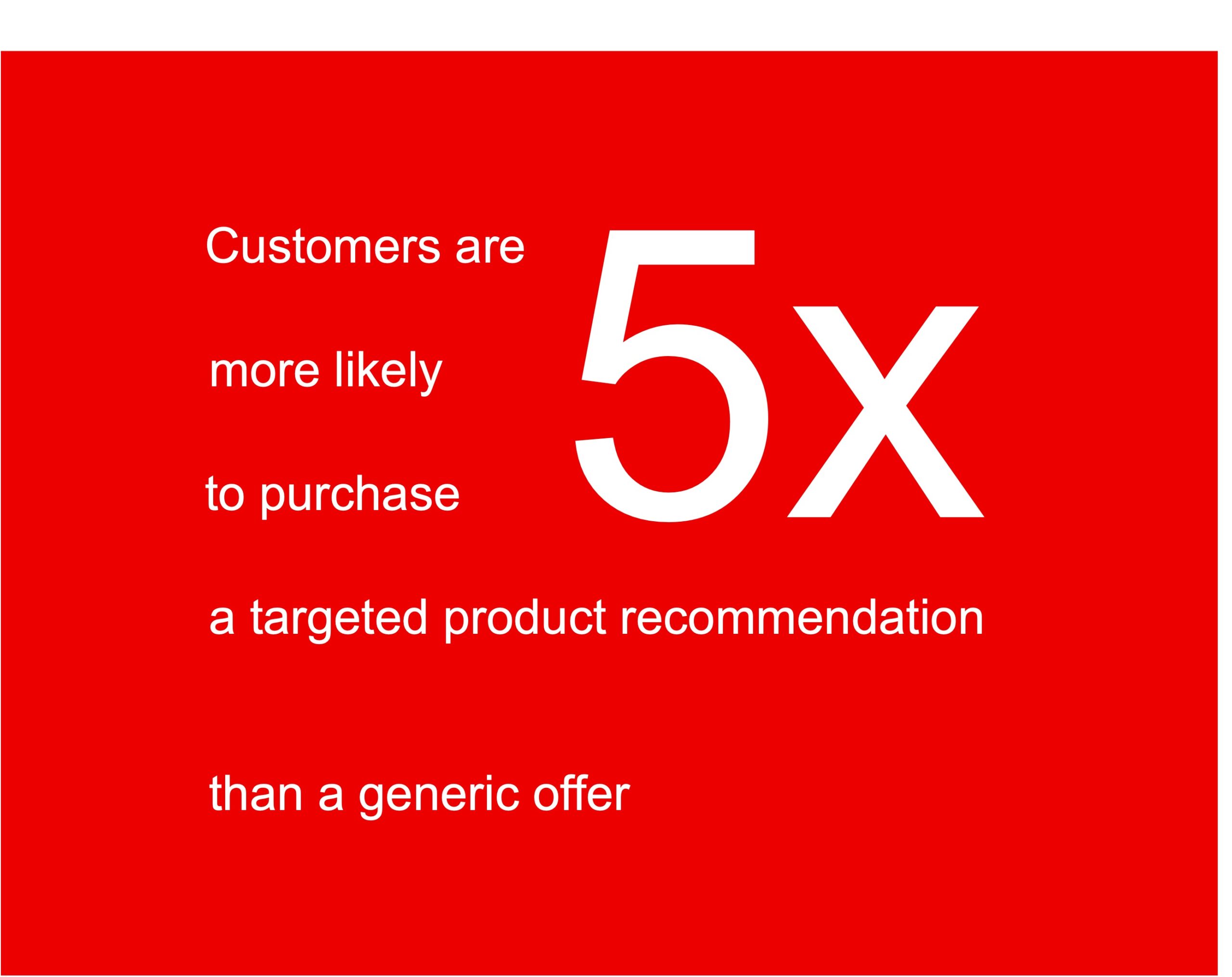Product analytics
Product recommendation engines
Identify customers 5 times more likely to purchase
Recommendation engines match the products you need to sell, with people most likely to buy
We built a sophisticated recommendation engine that leverages transaction, product, and stock data to understand and predict customer purchasing behaviours, which enables:
- Predictive Insights – When customers purchase a chair, our engine identifies other items they are likely to buy, enabling precise product recommendations
- Targeted Marketing – One client used this technology by targeting customers most likely to purchase overstocked items
- Optimised Budget – This highly targeted approach ensures relevant marketing optimises budgets and increases customer engagement
- Inventory Management – Integrated stock data enables smarter inventory management and excess stock reduction, which drives efficiency and profitability
As a result, customers are 5 times more likely to purchase a recommended product compared to generic offers, driving increased sales and customer satisfaction.

Improve your stock turnover and increase customer satisfaction
Through algorithms and machine learning, product recommendation engines analyse past behaviour, customer preferences, and historical transaction data to generate the most relevant and personalised product suggestions for customers.
These engines play a crucial role in improving engagement rates, increasing basket size and driving revenue for many businesses.
Recommendation engines can constantly improve over time, and enable you to personalise customer product offers before they have declared interests of left a traceable online footprint.
Relevant offer targeting
Reduce abandoned carts
Maximise customer spend
Increase customer satisfaction

Book a demo to grow your customer value
If you need to unlock value or add external value to your data, to grow market share or customer spend, then we can help.
Our analysts will chat with you about your objectives and identify the best approach for your business. Just choose a time that suits you.
Frequently asked questions
How do product recommendation engines work?
Recommendation engines work by analysing user data such as browsing history, past purchases and demographic information to predict what products a user might be interested in.
Algorithms such as content filtering, collaborative filtering or a combination of them both can be used to make these predictions.
What filtering methods does a recommendation engine use?
Collaborative filtering relies on user behaviour and preferences. It identifies users who have similar preferences and recommends items or content that those similar users have purchased or interacted with.
Content-based filtering recommends products based on the attributes and characteristics of the products themselves. It looks at features or themes of the items and suggests similar or related items based on those attributes.
Some engines can use a hybrid of both techniques to provide more accurate or diverse product recommendations.
How do recommendation engines handle privacy & data security concerns?
Recommendation engines should implement data anonymisation techniques, encryption, and access controls to protect user data and address privacy concerns.
How can businesses measure the success of their product recommendation engines?
Some of the success metrics for product recommendation engines include an increase in click-through rates, conversion rates, customer satisfaction and overall revenue as well as a reduction in basket abandonment.
Do you need to grow customer value faster?
Improving marketing with relevant, personalised recommendations in your communications will drive order values and customer loyalty.
If you’d like to know more and discuss your specific requirements, just get in touch here:



